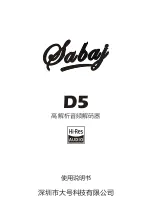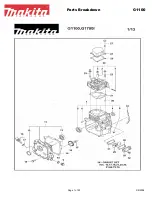
10
HS RS-232
↔
CURRENT LOOP CONVERTER ACTIVE
The HS RS-232
↔
Current Loop Converter Active is simple to install. After
configuring the DCE/DTE and active/passive switches, connect the two
twisted pairs using one of three methods: terminal blocks with strain relief, RJ-
11 jack, or RJ-45 jack. The method you use will depend on the specific model
you have. (See
Chapter 1
if you aren’t sure which method you should use.)
4.1 Twisted-Pair Wiring
Only one HS RS-232
↔
Current Loop Converter Active is needed for each RS-
232 to 20-mA current-loop circuit. The HS RS-232
↔
Current Loop Converter
Active is connected to the current-loop device using two twisted pairs. The
pairs must be “dry” (unconditioned) metallic wire, 19 to 26 AWG. Best
distance is achieved with smaller gauges (that is, thicker wires). When you
have completed wiring for your data circuit, the pin connections should be as
shown below:
4.1.1 T
WISTED
-P
AIR
C
ONNECTION
U
SING
T
ERMINAL
B
LOCKS
The terminal block/strain-relief version of the HS RS-232
↔
Current Loop
Converter Active (CL090A-F, CL090A-M, CL090AE-F, CL090AE-M) allows you
to hook up the line-side interface using bare wires. The following instructions
will tell you how to open the case, connect the bare wires, and fasten the
strain-relief collar in place.
XMT+
XMT-
G
RCV-
RCV+
- - - - - - - - -
G
RCV-
- - - - - - - - - - - - - - - - - - - -
- - - - - - - - - - - - - - - - - - - -
RCV+
To Shield (Optional)
- - - - - - - - - - - - - - - - - - - -
XMT-
- - - - - - - - - - - - - - - - - - - -
XMT+
One Pair
One Pair
G
4. Installation






































